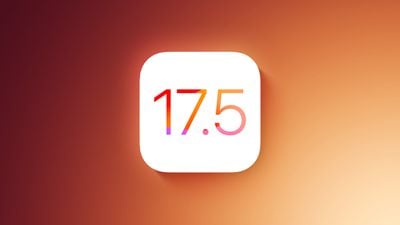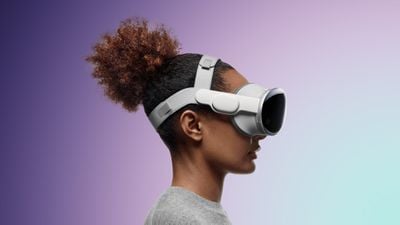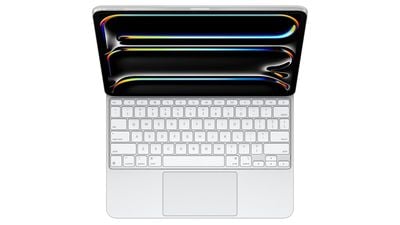AppleAVD
Available for: iPhone XS and later, iPad Pro 12.9-inch 2nd generation and later, iPad Pro 10.5-inch, iPad Pro 11-inch 1st generation and later, iPad Air 3rd generation and later, iPad 6th generation and later, and iPad mini 5th generation and later
Impact: An app may be able to execute arbitrary code with kernel privileges
Description: The issue was addressed with improved memory handling.
CVE-2024-27804: Meysam Firouzi (@R00tkitSMM)
AppleMobileFileIntegrity
Available for: iPhone XS and later, iPad Pro 12.9-inch 2nd generation and later, iPad Pro 10.5-inch, iPad Pro 11-inch 1st generation and later, iPad Air 3rd generation and later, iPad 6th generation and later, and iPad mini 5th generation and later
Impact: An attacker may be able to access user data
Description: A logic issue was addressed with improved checks.
CVE-2024-27816: Mickey Jin (@patch1t)
AVEVideoEncoder
Available for: iPhone XS and later, iPad Pro 12.9-inch 2nd generation and later, iPad Pro 10.5-inch, iPad Pro 11-inch 1st generation and later, iPad Air 3rd generation and later, iPad 6th generation and later, and iPad mini 5th generation and later
Impact: An app may be able to disclose kernel memory
Description: The issue was addressed with improved memory handling.
CVE-2024-27841: an anonymous researcher
Find My
Available for: iPhone XS and later, iPad Pro 12.9-inch 2nd generation and later, iPad Pro 10.5-inch, iPad Pro 11-inch 1st generation and later, iPad Air 3rd generation and later, iPad 6th generation and later, and iPad mini 5th generation and later
Impact: A malicious application may be able to determine a user's current location
Description: A privacy issue was addressed by moving sensitive data to a more secure location.
CVE-2024-27839: Alexander Heinrich, SEEMOO, TU Darmstadt (@Sn0wfreeze), and Shai Mishali (@freak4pc)
Kernel
Available for: iPhone XS and later, iPad Pro 12.9-inch 2nd generation and later, iPad Pro 10.5-inch, iPad Pro 11-inch 1st generation and later, iPad Air 3rd generation and later, iPad 6th generation and later, and iPad mini 5th generation and later
Impact: An attacker may be able to cause unexpected app termination or arbitrary code execution
Description: The issue was addressed with improved memory handling.
CVE-2024-27818: pattern-f (@pattern_F_) of Ant Security Light-Year Lab
Libsystem
Available for: iPhone XS and later, iPad Pro 12.9-inch 2nd generation and later, iPad Pro 10.5-inch, iPad Pro 11-inch 1st generation and later, iPad Air 3rd generation and later, iPad 6th generation and later, and iPad mini 5th generation and later
Impact: An app may be able to access protected user data
Description: A permissions issue was addressed by removing vulnerable code and adding additional checks.
CVE-2023-42893: an anonymous researcher
Maps
Available for: iPhone XS and later, iPad Pro 12.9-inch 2nd generation and later, iPad Pro 10.5-inch, iPad Pro 11-inch 1st generation and later, iPad Air 3rd generation and later, iPad 6th generation and later, and iPad mini 5th generation and later
Impact: An app may be able to read sensitive location information
Description: A path handling issue was addressed with improved validation.
CVE-2024-27810: LFY@secsys of Fudan University
MarketplaceKit
Available for: iPhone XS and later
Impact: A maliciously crafted webpage may be able to distribute a script that tracks users on other webpages
Description: A privacy issue was addressed with improved client ID handling for alternative app marketplaces.
CVE-2024-27852: Talal Haj Bakry and Tommy Mysk of Mysk Inc. (@mysk_co)
Notes
Available for: iPhone XS and later, iPad Pro 12.9-inch 2nd generation and later, iPad Pro 10.5-inch, iPad Pro 11-inch 1st generation and later, iPad Air 3rd generation and later, iPad 6th generation and later, and iPad mini 5th generation and later
Impact: An attacker with physical access to an iOS device may be able to access notes from the lock screen
Description: This issue was addressed through improved state management.
CVE-2024-27835: Andr.Ess
RemoteViewServices
Available for: iPhone XS and later, iPad Pro 12.9-inch 2nd generation and later, iPad Pro 10.5-inch, iPad Pro 11-inch 1st generation and later, iPad Air 3rd generation and later, iPad 6th generation and later, and iPad mini 5th generation and later
Impact: An attacker may be able to access user data
Description: A logic issue was addressed with improved checks.
CVE-2024-27816: Mickey Jin (@patch1t)
Screenshots
Available for: iPhone XS and later, iPad Pro 12.9-inch 2nd generation and later, iPad Pro 10.5-inch, iPad Pro 11-inch 1st generation and later, iPad Air 3rd generation and later, iPad 6th generation and later, and iPad mini 5th generation and later
Impact: An attacker with physical access may be able to share items from the lock screen
Description: A permissions issue was addressed with improved validation.
CVE-2024-27803: an anonymous researcher
Shortcuts
Available for: iPhone XS and later, iPad Pro 12.9-inch 2nd generation and later, iPad Pro 10.5-inch, iPad Pro 11-inch 1st generation and later, iPad Air 3rd generation and later, iPad 6th generation and later, and iPad mini 5th generation and later
Impact: A shortcut may output sensitive user data without consent
Description: A path handling issue was addressed with improved validation.
CVE-2024-27821: Kirin (@Pwnrin), zbleet, and Csaba Fitzl (@theevilbit) of Kandji
Sync Services
Available for: iPhone XS and later, iPad Pro 12.9-inch 2nd generation and later, iPad Pro 10.5-inch, iPad Pro 11-inch 1st generation and later, iPad Air 3rd generation and later, iPad 6th generation and later, and iPad mini 5th generation and later
Impact: An app may be able to bypass Privacy preferences
Description: This issue was addressed with improved checks
CVE-2024-27847: Mickey Jin (@patch1t)
Voice Control
Available for: iPhone XS and later, iPad Pro 12.9-inch 2nd generation and later, iPad Pro 10.5-inch, iPad Pro 11-inch 1st generation and later, iPad Air 3rd generation and later, iPad 6th generation and later, and iPad mini 5th generation and later
Impact: An attacker may be able to elevate privileges
Description: The issue was addressed with improved checks.
CVE-2024-27796: ajajfxhj
WebKit
Available for: iPhone XS and later, iPad Pro 12.9-inch 2nd generation and later, iPad Pro 10.5-inch, iPad Pro 11-inch 1st generation and later, iPad Air 3rd generation and later, iPad 6th generation and later, and iPad mini 5th generation and later
Impact: An attacker with arbitrary read and write capability may be able to bypass Pointer Authentication
Description: The issue was addressed with improved checks.
WebKit Bugzilla: 272750
CVE-2024-27834: Manfred Paul (@_manfp) working with Trend Micro's Zero Day Initiative









 Hover Typing will show larger text when typing in a text field
Hover Typing will show larger text when typing in a text field


 Note that from the new Battery Health settings menu you can also view the manufacture date of your iPad's battery, as well as the month and year on which it was first used.
Note that from the new Battery Health settings menu you can also view the manufacture date of your iPad's battery, as well as the month and year on which it was first used.






















